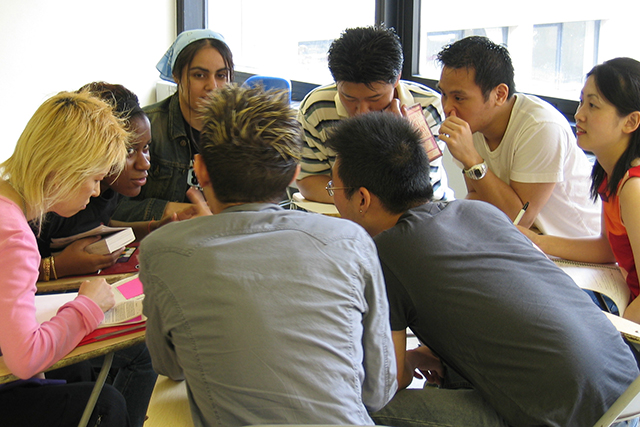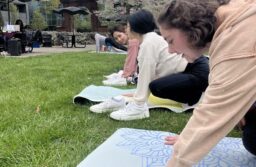
Photo Courtesy of Susan Sermoneta
There is a love-hate relationship associated with group projects; some people jump at the chance to work with their friends, while others silently pray that they will be able to do the project on their own.
The first step to conquering a dreaded group project is finding partners that you can rely on to complete their portion of the assignment. Although you might be inclined to pair up with your friends, it is best to avoid working with them because your relationship can go sour if the project takes an unexpected turn.
Group projects usually entail multiple components that would be difficult to complete as an individual project.
Freshman Drew Anton said, “there isn’t much pressure [with group projects] because the work is spread out.”
When students work on their own, they are limited to their own thoughts. By working with others to complete a project, students are exposed to new concepts that allow them to approach their assignment differently.
Mayra Cabrera, a senior, explained that working with classmates makes the research more interesting because group members are usually focusing on different elements of the project, it broadens the discussion.
Freshman Donald Irons explained, “You have people to bounce ideas off of, which results in better quality of work.” He further elaborated, “Since humans are a social species, they tend to work better in groups.”
Although group projects require a lot of planning and coordination, working with others will strengthen your communication and leadership skills. Working on a group project is an easy way to make friends and build relationships that might last throughout your academic career.
Cabrera said, “[Group projects] offer you a great opportunity to learn how to work with different types of personalities and opinions.”
Group projects can be a daunting task, especially if you have someone in your group that decides to not contribute to the project. The nightmare everyone fears is when one individual ends up doing the most work and the rest of the group still gets credit.
There are different approaches to dealing with group members that do not do their part. The ideal approach is to talk to them to see if they are facing any problems or if there is something preventing them from completing their work.
“First I would ask them to do the work, but if I notice they weren’t following up with it, I would do their work,” explains Anton.
Cabrera said she would take a different approach. Her method involves offering assistance to the group member in hopes of sparking his or her interest in the topic. If nothing changes, Cabrera would address the situation to her professor.
Irons explained that to approach the situation, “You want to be firm, but kind, but don’t be antagonistic. Hopefully, you can come to a solution that works for everyone.”
mladha@ramapo.edu





